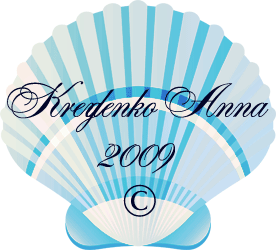Seascape is a type of landscape, a special genre in painting, (or marine from lat. marinus through fr. marine, - maritime). Marine art depicts sea views and also scenes of naval battles or other events connected with the sea. The main difficulty in painting seascapes from life is that the state of the sea changes every moment, but this changeability of the sea also gives artists an opportunity to improvise, using their imagination. The main thing in seascapes is to draw sea in different states and the conflict between a man, got into the gale, and sea element.
The marine genre originates from the art of Flemish artists. The most famous of them was Pieter Bruegel the Elder. However, marine as a genre painting, appeared in Europe only at the end of the XVI first half of the XVII centuries. The flowering of marine is connected with the Dutch School (Hercules Seghers, Willem van de Velde the Younger and etc.). And then the sea painting became the tradition of European Art. But the flowering of marine is connected with the Dutch School (Hercules Seghers, Willem van de Velde the Younger and etc.). And then the sea painting became the tradition of European Art.
The contents of the marines
Maritime art portrays or draws the main inspiration from the sea. At first artists depicted ships or painted historical events at sea such as famous battles or arrivals of high-ranking persons. These plots are the most typical of the art of the XVIII century. The painting of the sea itself is coming to the foreground, but still it is closely connected with depicting people at sea. The pure marine the seascape without ships and staffage appeared at the end of the XIXth century. Since the appearance of marine art sea has become the subject of painting of romanticists, impressionists, symbolists, realists and artists of other painting styles. Typical features of painting seascapes in different centuries by artists of different schools are presented here.
Marine artists were interested in different states of sea from the absolutely calm sea to the gale.
They painted it in different time and season.
Conclusions
In the first half of the XIXth century artists painted rough sea and in contrast to it calm sea. But the painters of the end of the century didnt bent for the painting of gales, as their predecessors. It may be connected with that fact that the artists of the first half of the XIXth century painted in the style of romanticism. What is more, the gale is the symbol of freedom. A number of works, where we can see the painting of stormy sea, is reduced from century to century (the first half of the XIXth century 43%, the second half of the XIXth century 18%, the first half of the XXth century 10%). But, however, we can see a lot of works depicting serene sea in all periods.At the end of the XIXth century artists rarely painted sea after the gale, and in the beginning of the XXth century they absolutely stopped doing it. Only the artists of the first half of the XIXth century were interested in depicting sea before the gale. There were no pictures in other periods, where sea was painted in this state.
From century to century artists were becoming more and interested in depicting the surf (the first half of the XIXth century 7%, the second half of the XIXth century 22%, the first half of the XXth century 22%). It became extremely popular in the first half of the XXth century.
Conclusions
In the first half of the XIXth century ships and people were depicted in seascapes very often. But by the beginning of XXth century they already vanished from marines. We can notice the tendency to simplify the paintings (ships: the first half of the XIXth century 86%, the second half of the XIXth century 69%, the first half of the XXth century 60%; people: the first half of the XIXth century 71%, the second half of the XIXth century 42%, the first half of the XXth century 20%).
Nevertheless new imageries replaced the old ones and new objects beautified seascapes. In the beginning of the XXth century we can see more often mountains (the first half of the XIXth century 21%, the second half of the XIXth century 47%, the first half of the XXth century 67%), birds and the disc of sun (moon) (the first half of the XIXth century 7%, the second half of the XIXth century 10%, the first half of the XXth century 40%). Moreover, with the lapse of time, compositions are being painted not in the open sea, but near the shore (the first half of the XIXth century 29%, the second half of the XIXth century 48%, the first half of the XXth century 50%).
The imageries of lighthouse and cliff became popular in the second half of the XIXth century and in the beginning of the XXth century. The presence of island in marines was rare in all periods.
Conclusions
In all periods artists preferred to paint sea in daylight, when the sun is in zenith. We can see night in the pictures of artists of the first half of the XIXth century. And in the beginning of the XXth century artists painted sunset at sea. So we can see the changes in seascape painting.
Dawn at sea is depicted in marines in all periods; we can see it in seascapes of the first half of the XIXth century and the century later.
Conclusions
In the first half of the XIXth century artists used warm colours. But the century later they began to paint using cold tints (we can see it on the table).
In the XIXth century marine artists created their masterpieces using intense and also quiet colours. But by the beginning of XXth century intense tints replaced quiet colour gamut.

